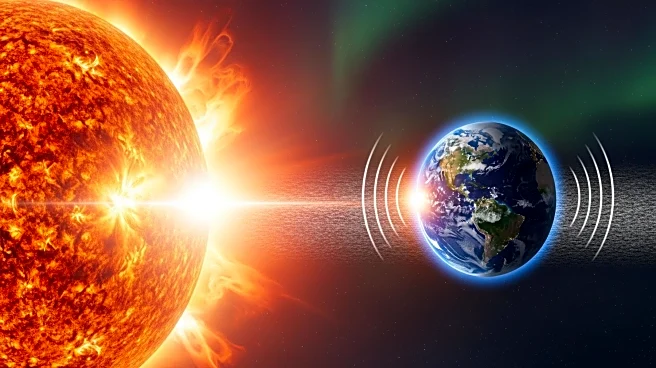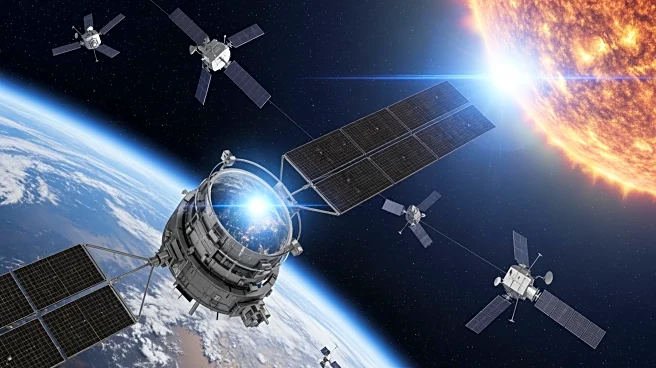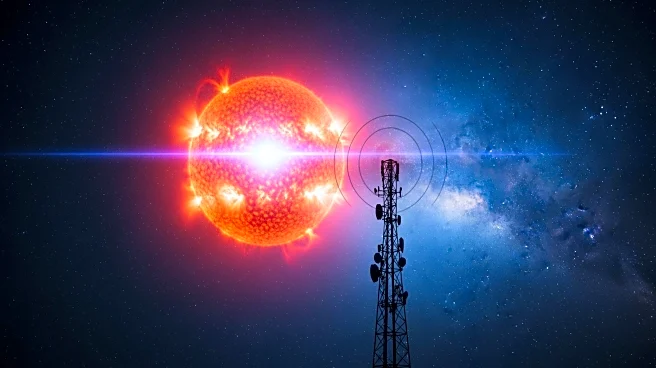What's Happening?
The sun has emitted two significant X-class solar flares within a 12-hour period, leading to radio blackouts across sunlit regions of Earth. The first flare, classified as X1.8, originated from sunspot
AR4274 and peaked at 12:34 p.m. EST, causing a strong R3 radio blackout across North and South America. A second flare, X1.1-class, erupted later from a region beyond the sun's southeastern limb, affecting radio signals in the North Pacific Ocean, New Zealand, and parts of eastern Australia. Both flares released coronal mass ejections (CMEs), though initial models suggest they are not directed at Earth. However, the outer edges of these CMEs may interact with solar wind streams, potentially sparking geomagnetic storm conditions around November 6-7, according to NOAA.
Why It's Important?
These solar flares highlight the sun's increasing activity, which can have significant impacts on communication systems and satellite operations. Radio blackouts can disrupt navigation and emergency services, affecting industries reliant on radio communications. The potential geomagnetic storms could enhance aurora displays, offering opportunities for scientific observation and public interest. However, they also pose risks to power grids and satellite functionality, necessitating preparedness from utility companies and space agencies.
What's Next?
As the sun's activity continues to rise, scientists and agencies will monitor further developments to predict and mitigate impacts on Earth. NOAA and other space weather organizations will provide updates on geomagnetic storm conditions, advising stakeholders on potential disruptions. The scientific community may use this period to study solar phenomena and improve predictive models for future solar events.
Beyond the Headlines
The increased solar activity underscores the importance of investing in space weather research and infrastructure to better understand and respond to solar events. This could lead to advancements in satellite technology and communication systems designed to withstand solar disruptions, enhancing resilience in critical sectors.











